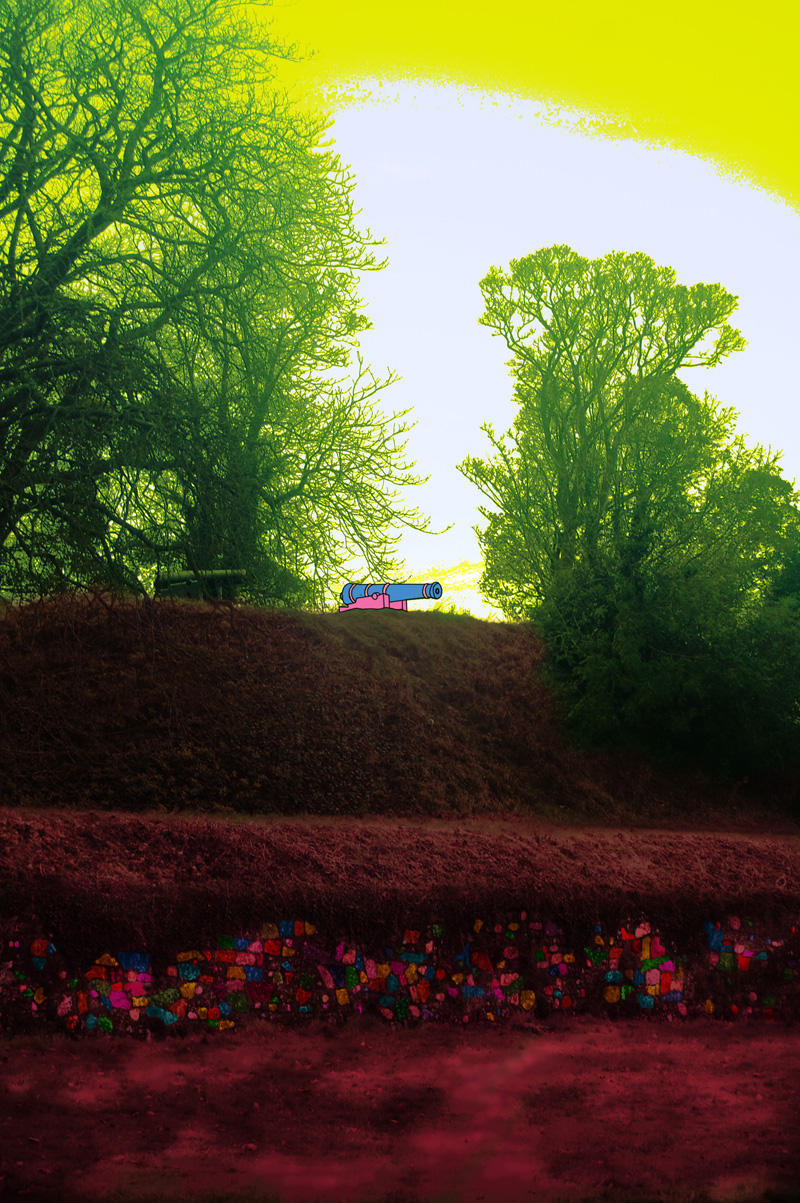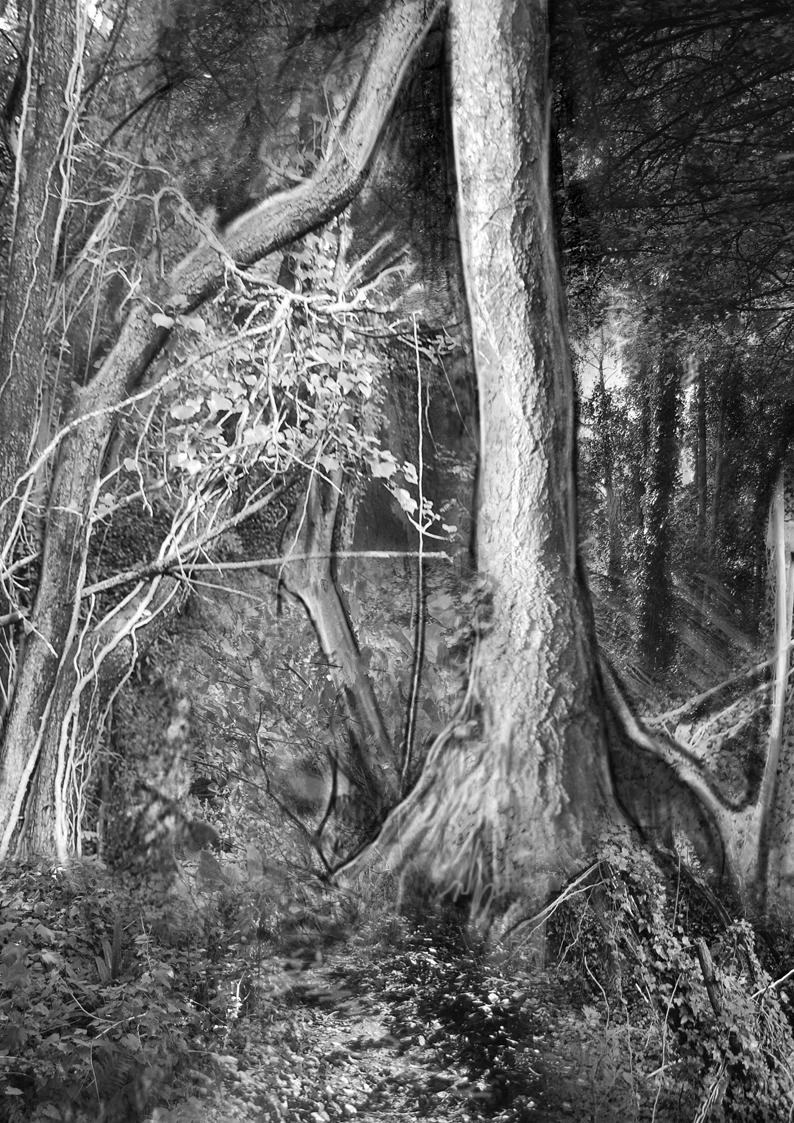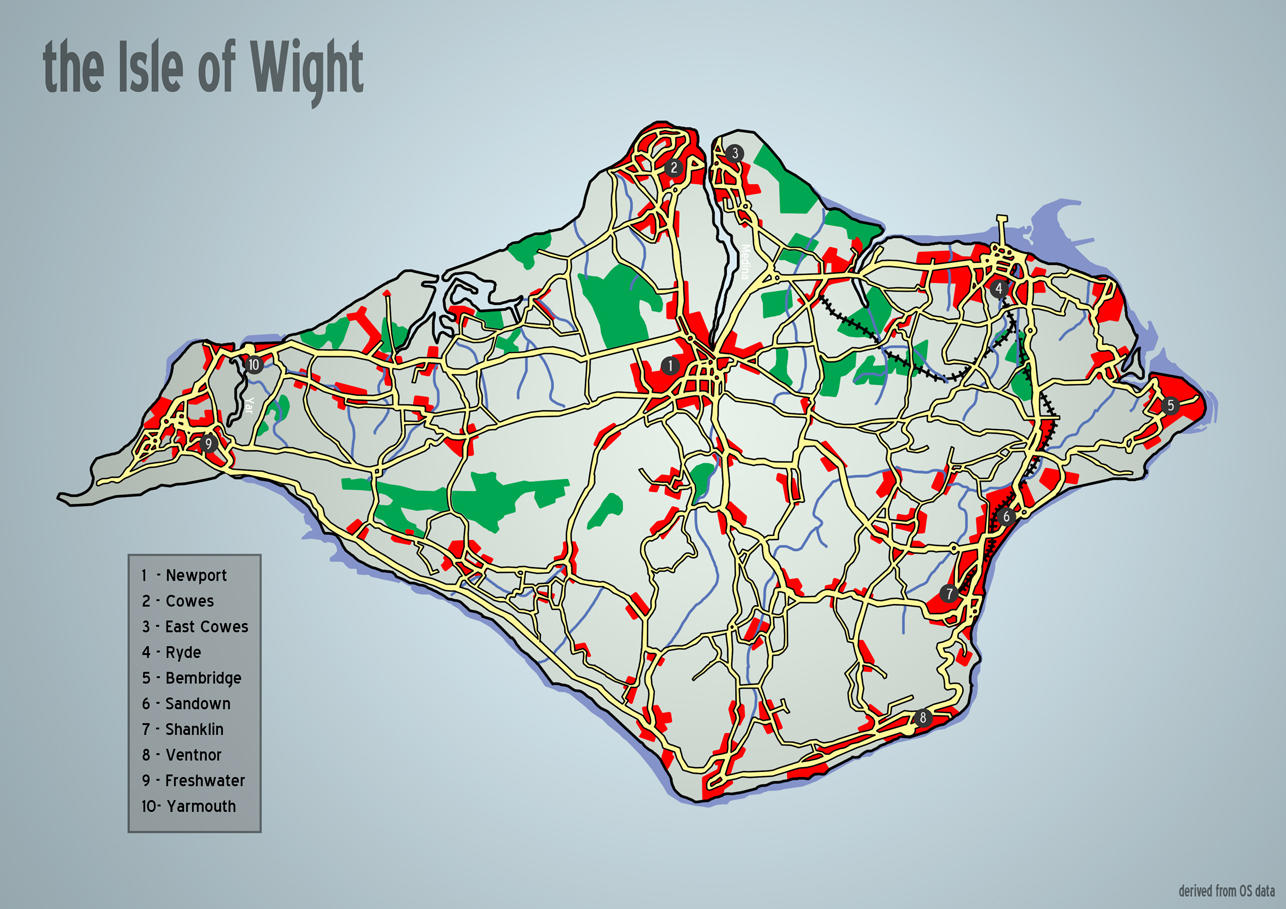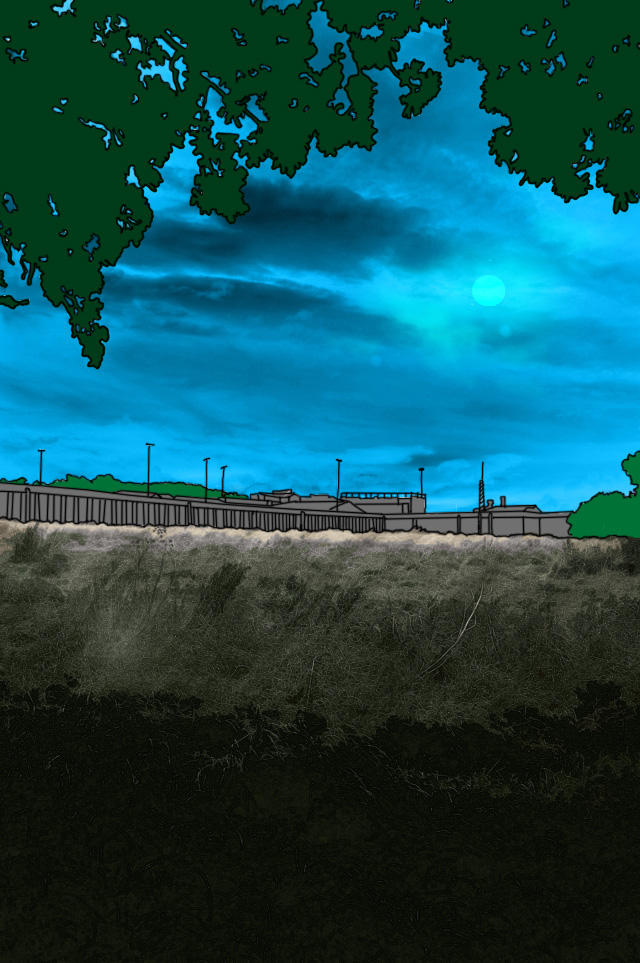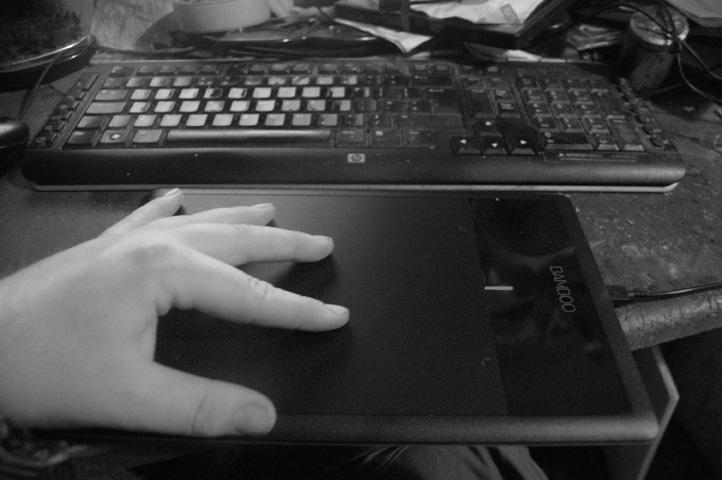Vectis is a
multimedia art project, designed to be finally realised in the form of a
book containing images and words. This book will be produced in the
tradition of the artist's book, that is to say, the physical structure
of the book (pages etc.) and it's overall design will be conceptually
important features of the final product. What this means is that, if all
goes to plan, Vectis will not properly be able to be
understood in any format but the book as I have designed and realised it.
Any other presentation format will be a record of the work rather than
the work itself, much as a photograph of a painting or a recording of a
concert.
The purpose of the book, as previously
stated, is to explore the psychogeography of the Isle of Wight.
Psychogeography is a fairly nebulous term, which I have deliberately
avoided attempting a precise definition of. Literally it just means
"mental geography", but the word carries all sorts of interesting
associations. It sounds like 'psychology', but also a bit like
'psychopathy'; it would seem to be a word that describes a science, yet
psychogeography is not really a scientific practice in the least. It is,
as much as it is anything, a crystallisation of an intellectual
tradition that Merlin Coverley, in his only slightly breathless
introduction to the subject fittingly entitled '
Psychogeography',
identifies as stretching back to British literary luminaries including
Defoe and Blake, going on down the years to include such diverse figures
as Robert Louis Stevenson, Charles Baudelaire, Guy Debord, Alan Moore
and Iain Sinclair. Coverley explicitly identifies psychogeography,
through these and other writiers, with the experience of two particular
cities; London and Paris. This is, to my mind, problematic. Leaving out
the fact that Coverley notably fails to identify any writers that are
not white men*, he also explicitly aligns his view of psychogeography
with a strain of urbanist thinking that is, in it's essence, utopian.
I should clarify here that when I say that a train of thought is
utopian, what I mean specifically is it comes from a tradition of
western thought that recognises the
possibility of utopia in a
hazily (or, worryingly precisely) defined future, rather than that it
assumes that the present day city is a utopian place. A continuous theme
that pervades all the way through from the mysticism of Blake to the
post-Marxism of the Situationist International (via Chartism, Das
Kapital, the Paris Commune etc. etc.) is the essentially Christian idea
that history is a process that will lead first to tribulation and decay,
and then to a better and more glorious world. In London/Paris centric
psychogeography this finds itself expressed in the idea that the city (these
two cities in particular) are great cultural engines that have either
failed to start or are winding down because of the machinations of often
nebulous systematic oppressors, expressed through modifications to and
restrictions on the architecure and physical geography of the cities
themselves. If the workers could be liberated, if the 'mind-forged
manacles' could be shattered, if the zoning laws could be abolished, ah,
what then? What better and more glorious world might we build?
My problem with this intellectual
tradition is, I will admit, largely a political one. I believe,
essentially, that the majority of the London/Paris writers have, whilst
in many cases particularly in the 20th century espousing radical left
wing views, failed to confront an essential parochialism at the core of their being. In one short, vulgar phrase, what is it that makes their homes so fucking important? It can hardly be a coincidence that London and Paris are cities that have sat at the centre of two
of the vastest and, frankly, most unpleasant empires in the history of
the world. Focusing particularly on the London tradition, which is more
relevant to my studies, it seems obvious to me that much of the writing identified as psychogeography forms part of a tradition of small-minded intellectual imperialism that exists even within (indeed, especially within) the UK itself, where London becomes the centre of all things and a yardstick by which to measure all other places by. Part of my intention with Vectis, then, is to redress the balance a little by using the methodology of psychogeography (particularly as developed by Iain Sinclair and the admittedly broader-thinking Patrick Keiller) to deal with a much more marginal place.
The name Vectis comes from 'Insula Vectis', the Latin name for the Isle of Wight; this is the subject of the project. The island is an interesting place both because of what it is and what it is not; and this is a subject I shall expand upon in future posts. It is difficult to summarise, but I shall mention one, perhaps rather esoteric sounding point. The surface of the earth is a (rough) sphere. In euclidean geometry, this can be represented as a plane in which all straight lines become circular paths leading back to their point of origin. The centre of this plane, and thus the centre of the world, can be anywhere. We should also note, again perhaps somewhat occultly, that an island, unlike a city, has a discrete physical existence within defined geographical boundaries (its coastline) rather than defined political boundaries; that it is a product of nature rather than a product of man but is still invested with the same significance of being a distinct place we give to cities.
Yes, I know I'm waffling.
That will probably be all for today; I have some errands to run. I am loath to set a schedule for updates to occur on certain days, as I tend to work unevenly (some days I can achieve nothing, other days I end up staying up all night hammering away). I will say, however, that I hope the updates can at least be frequent; hopefully, they will also be interesting.
*And pretty much all white heterosexual men to boot. I can do something about
that at least.




